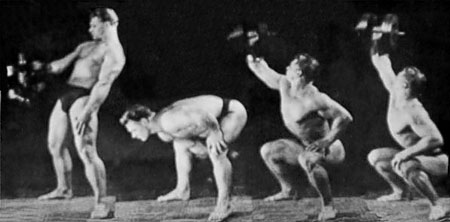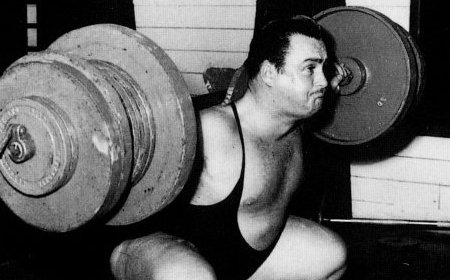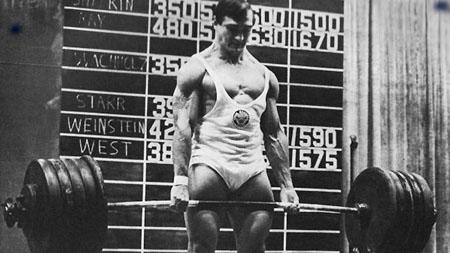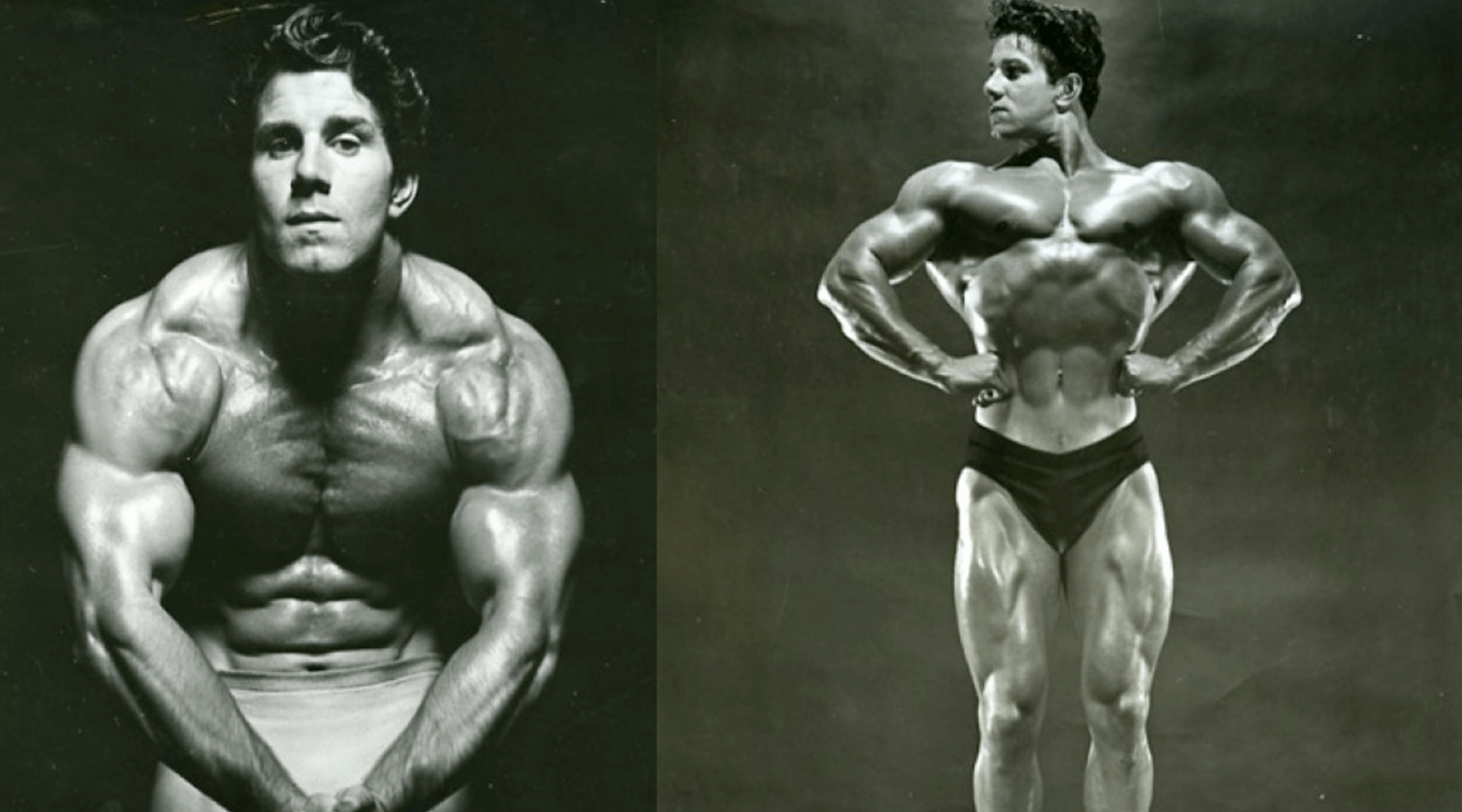Introduction to the 5×5

Greetings and welcome to Herculean Strength! I’m Conrad Scott and in this, my first article for the website, I’ll be providing you with an introduction to the 5×5 training routine, which I and a great many other lifters know well.
Over the coming weeks and months, I’ll be giving the lowdown on various other popular (and not so popular) routines, including a discussion of their history and their relative merits.
The 5×5 is one of the most popular routines for beginner lifters looking to build size and strength, and for good reason: it’s simple to follow, satisfying and the results largely speak for themselves.
Today the routine is more or less synonymous with Starting Strength and Mark Rippetoe, but actually has a long history which stretches back at least to the 1930s. For nearly 100 years, strength athletes, including bodybuilders and Olympic lifters, have been using variations of the 5×5 to build powerful, muscular physiques.
Before we examine the history, let’s consider the premise behind the routine, which is simple.
How Does 5×5 Work?
Basically, the lifter performs five sets of five reps of a variety of compound lifts, usually but not always the bench press, back squat, deadlift and overhead (military) press.
Why five reps and five sets? In terms of repetitions, five is considered to be a compromise number that sits nicely between training for strength and training for hypertrophy (muscle gain); five reps can be performed, even at heavy weights, without excessive muscular fatigue, which is generally the cause of sloppy performance and increases the risk of injury.
Five sets of five reps provides enough volume for total muscle stimulation. If the lifter is able to complete the five sets of five reps at the prescribed weight, more is added to the bar next time, and so on until the lifter fails to complete five sets of five reps.
The format and the progression is clear and, as I myself can attest, satisfying too.
Many, especially beginner, lifters make the mistake of not adding weight to the bar (failing to follow the principle of progressive overload) but with a 5×5 done properly, there is no danger of that.
Although the name that most readily comes to mind in association with the 5×5 is Mark Rippetoe, the first man to write about it, if not necessarily actually to do it, was Mark Berry.
A Brief History of 5×5

Berry, an American national weightlifting champion and coach, offered various mail order strength courses, as well as writing in Strength, The Strongman and Physical Training Notes magazines.
Berry was famous for training John Grimek, an Olympic lifter who competed in the Berlin Olympics and went on to dominate early bodybuilding to such an extent that the rules for the Mr America were changed to prevent him from competing.
Berry’s 5×5 was part of a larger workout program in three phases.
After the first two phases, involving different rep schemes and different exercises, in the third phase the lifter performs eleven exercises for five sets of five reps.
The exercises are not those familiar to modern five-by-fivers, but Olympic lifts like snatches, cleans and jerks and such old-school lifts as the bent press and side press.
Another important routine in the evolution of the 5×5 was provided by Reg Park, the legendary English bodybuilder who served as an early mentor to Arnold Schwarzenegger.
Park began to train using 5×5 after training in California with the Canadian Olympic weightlifter Doug Hepburn (gold at the 1953 Olympics), who boasted some impressive PRs (760lbs squat, 705lbs deadlift, 580lbs bench press). 5×5 training helped Park achieve some impressive totals of his own, including a 500lbs bench press, 600lbs squat and a strict curl of 200lbs. He published a 5×5 routine in 1960, in a pamphlet entitled ‘Strength and Bulk Training for Bodybuilders’.

Like Berry’s routine, Park’s is much more extensive than most present-day 5x5s, including Starting Strength; although, unlike Berry’s routine, the exercises in Park’s are more familiar. In addition to more or less all of the exercises in the Starting Strength 5×5, Park’s routine included front squats, hyperextensions, calf raises, high pulls, behind-the-neck presses, barbell curls and triceps extensions.
Park was famous for working out for up to three hours a day at various points, and his 5×5, to be performed three times a week with a day’s rest between each workout, would almost certainly take at least two and probably even three hours for most lifters to complete, especially as the weight becomes heavy.
Between the 1960s and Starting Strength came Bill Starr, who wrote the famous training manual The Strongest Shall Survive: Strength Training for Football, first published in 1976. The training routine outlined by Starr was first formulated for and tested by the Baltimore Colts, who won the 1970 Superbowl.
The basic aim of the program is to increase overall body strength quickly and in as simple a manner as possible, with a minimum of equipment. Starr focused on what he called ‘the big three’, bench presses, squats and power cleans, as well as overhead pressing and bent rows.
‘These are 3 basic exercises used by weightlifters to increase their strength….the football player (and you can insert Martial Artist, Fighter, whatever there) must work for overall body strength as opposed to specific strengthening exercises….In other words the athlete should be building total leg strength rather than just stronger hamstrings. He should be seeking overall strength in his shoulder girdle rather than just stronger deltoids.’
The original Bill Starr routine involved three workouts a week. On Monday, squats, bench press and barbell rows. On Wednesday, power cleans, incline bench press and squats. On Friday, power cleans, overhead press and squats.

The rep schemes might vary, but the basis for the whole program was definitely 5×5, with progressive overload from week to week being the aim.
This KISS (keep it simple, stupid) approach was fully carried over into the Starting Strength routine, which is very obviously an update of Starr’s routine.
The Starting Strength program also incorporates deadlifts.
Starr did not include deadlifts in his routine because he claimed they have a ‘high casualty rate’ and just aren’t worth the risk.
5×5 Afterthoughts and Criticisms
For all its popularity and success, however, there are persistent criticisms of the simplified 5×5 model as advocated by Starr and Rippetoe.
Despite the program’s simplicity, and the satisfaction and strength and size gains it provides –- none of which can be denied –- many practitioners and critics have pointed to a lack of balance which can lead to a distinctive kind of physique, often dubbed ‘the Starting Strength body’.
You may be familiar with the Chloë Moretz memes in which her head is photoshopped onto a flabby lifter’s body; if not, search Google Images for ‘Chloë Moretz Starting Strength’ to see what I’m talking about.

The leg-heaviness of the Starting Strength routine, in combination with the advice to consume up to 5,000 calories a day to ensure growth, often leads, quite literally, to leg heaviness, without corresponding growth in the upper body.
The routine is definitely not one for lifters looking for an ‘aesthetic body’ – but then Rippetoe would absolutely be the first to acknowledge that.
Those looking to build a more balanced physique could do worse than to look instead to Reg Park’s routine for suitable accessory exercises; although in order to make it work as part of the average schedule, some exercises would almost certainly have to be dropped.
No program is without its faults, but used correctly, with the right mindset, the 5×5 has provided not only a powerful and satisfying introduction to the world of strength training but has also allowed even bodybuilders to add size and strength.
This is only a brief introduction to the 5×5 routine: much more could, and will be said, about it in future.
Over the coming months I’ll be discussing all sorts of topics, including supplementation and diets, exercises you should be doing (but aren’t) and routines from the Golden Era of bodybuilding.











